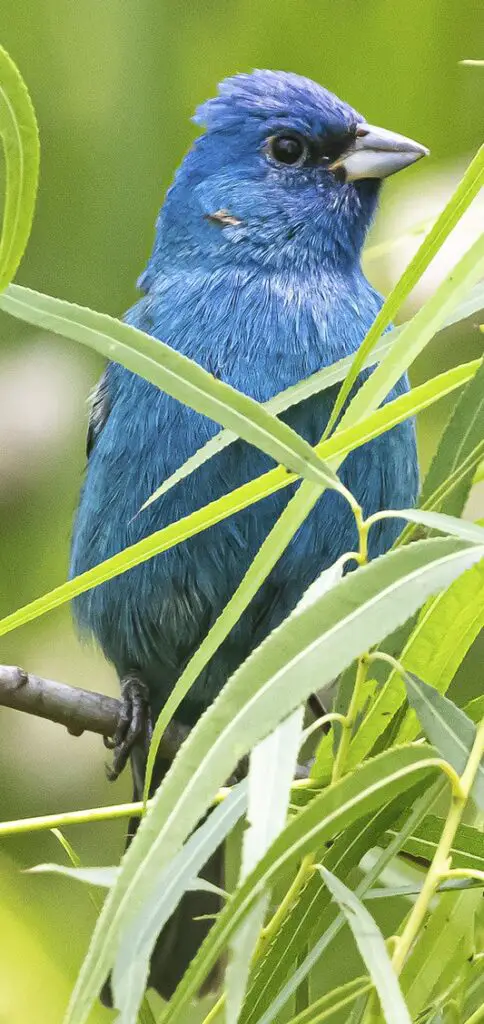
Above left: An indigo bunting perches at the birding center on Thursday, April 11. The indigo bunting is a small, seed-eating bird in the cardinal family. It ranges from southern Canada to northern Florida during the breeding season, and from southern Florida to northern South America in the winter.
Spring migration is underway, and eager birders in Port Aransas are out in force to view the many species that stop here between their summer and winter homes.
The peak time for migration in the Coastal Bend is in April, with the increased arrival of songbirds, according to the Audubon Society website.
The Great Texas Coastal Birding Trail, which ties together birding sites from Beaumont to Brownsville, passes through Port Aransas, with five sites here. shot between March 21 and April 13 at the Leonabelle Turnbull Birding Center.
The information about the bird species on this page came from the Audubon Society website.

Above center: Birders gather at the birding center entrance on Wednesday, April 3. Birds have been plentiful in the trees at the entrance. Staff photos by Mary Goldsmith

Above right: A northern parula is seen on Thursday, March 21. The northern parula is a small New World warbler. It breeds in eastern North America from southern Canada to Florida.

Lower right: A yellow-throated warbler stops by the birding center on March 21. The bird shows off its bright yellow throat mostly in the canopy of forests in the southeastern United States. Many warblers migrate from South America to Canada each year. They nest farther south than most warblers, winter farther north and are even year-round residents in parts of the southern U.S.

Lower middle: A female northern cardinal is seen on Wednesday, April 10. The cardinal is one of the most abundant songbirds in North America. Its original U.S. range was mostly in the South, but the species has been expanding its range northward for decades.

Lower left: Photographed on March 21 was a prothonotary warbler. This bright golden warbler sings from high in the trees in southeastern swamps in summer. The name ‘prothonotary’ originally referred to a group of official scribes in the Catholic Church who wore bright-yellow hoods, as this bird appears to do.



Loading Comments